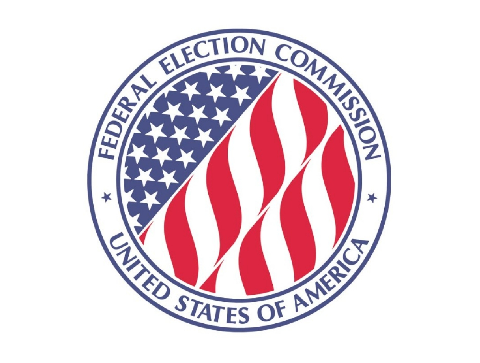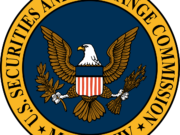On February 13, 2025, the Institute for Free Speech responded to a notice of proposed rulemaking and wrote comments to the Federal Election Commission supporting the proposed rules and approach set forth in REG 2024-06 (Notice 2024-29). The comments suggest several ways to broaden the proposed rules to better address the full scope of the reporting exemption.
Read a PDF of the comments here.
February 13, 2025
Federal Election Commission
1050 First Street, N.E.
Washington, DC 20463
Re: REG 2024-06 (Notice 2024-29); Modification and Redaction of Contributor Information—Comments on Notice of Proposed Rulemaking
Dear Commissioners:
The Institute for Free Speech (“IFS”) submits these comments on the above-referenced notice of proposed rulemaking[1] (the “NPRM”). IFS generally supports the proposed rules and approach set forth in the NPRM. Our comments below suggest several ways to broaden the proposed rules to better address the full scope of the reporting exemption articulated by the Supreme Court in Buckley v. Valeo. Specifically, we suggest that the rules should:
- Include donors’ names as information that may be exempted from reporting;
- Allow committees and organizations to use the proposed confidential procedure for seeking donor reporting exemptions;
- Have the Federal Election Commission (“FEC” or “Commission”) redact donors’ information not only for previously filed reports, but also for all reports going forward for the duration of a donor’s exemption; and
- Allow for payees’ information to be exempted from reporting.
1. Authority for and Desirability of Rulemaking
As a preliminary matter, the NPRM asks: (1) whether “the Commission ha[s] the authority to draft regulations to establish a new procedure for addressing as-applied exemptions” to the reporting requirements; and (2) whether such “a new approach [is] desirable.”[2] The answer to both questions is a resounding “Yes.”
1.1. Authority for Rulemaking
The Commission has general authority to “administer . . . and formulate policy with respect to [the] Act.”[3] The Commission not only has the authority, but it has an obligation, to administer the Act as it has been construed and narrowed by the judiciary,[4] including through rulemakings.[5]
As the NPRM recognizes,[6] the Supreme Court held in Buckley that there are circumstances in which “the Act’s [reporting] requirements cannot be constitutionally applied” because “the compelled disclosure of a party’s contributors’ names will subject them to threats, harassment, or reprisals from either Government officials or private parties.”[7] “[F]ears of reprisal” from such disclosure “may deter contributions” to an organization and therefore unconstitutionally impinge on the First Amendment “right of associational privacy developed in NAACP v. Alabama” for an “organization’s members to advocate their personal points of view in the most effective way.”[8]
Therefore, the Commission has both the authority and the obligation to promulgate a rule setting forth a procedure for donors and reporting entities to seek an exemption from the Act’s reporting requirements under the circumstances addressed in Buckley and other decisions.[9] Moreover, insofar as the Commission has granted exemptions from the reporting requirements through advisory opinions and even an “informal” process, it necessarily follows that the Commission also has the authority to create a formal procedure by rulemaking for considering and granting such exemptions.
1.2 Desirability of Rulemaking
The manner in which reporting exemptions have been addressed to date[10] also begs for a more accessible and better-defined approach. Donors and organizations that qualify for an exemption should not have to resort to costly and time-consuming litigation[11] in order to protect themselves from threats and reprisals for exercising their First Amendment rights. Moreover, the absence of litigation brought by individual plaintiffs suggests that this avenue is even more prohibitive for donors.
The advisory opinion process also is not a tenable avenue for individual donors in this situation. Under the Act and Commission regulations, all advisory opinions and requests, including the requester’s identity, must be made public.[12] Therefore, it would defeat the very purpose of seeking an exemption from donor reporting if individual donors have to submit an advisory opinion request publicly describing in detail all of the organizations they wish to give to and how they might be harmed if their donations were publicly reported.
Lastly, it likely comes as a surprise to the regulated community and public at large that “[t]he Commission has occasionally received informal requests to substitute or redact an individual’s address from publicly available documents, which it has considered on an ad hoc basis,”[13] and that “the Commission [has] granted such requests when they were supported by evidence of threats, harassment, or reprisal.”[14] Donors that qualify for a reporting exemption should not have to resort to an obscure, unpublicized, informal, and ad hoc Commission process.
2. Scope of Rulemaking
While IFS generally supports the proposed rules, the proposal is unduly narrow in scope.
2.1 Donors’ Names
“The proposed rules would only apply to the modification or redaction of a contributor’s identification information” and “do not establish a procedure for modifying or redacting a contributor’s name.”[15] The NPRM asks whether the proposed rules should also allow for exempting a donor’s name from reporting.[16]
The proposed rules must allow for exempting donors’ names. In the passage from Buckley that the NPRM itself quotes, the Supreme Court specifically articulated an exemption from “the compelled disclosure of a party’s contributor’s names.”[17] Similarly, in the two other court decisions the NPRM cites,[18] the Supreme Court and U.S. Court of Appeals for the Second Circuit also specifically exempted donors’ names and other information from reporting.[19]
While exempting other donor-identifying information (i.e., address, name of employer, and occupation) logically flows from the donor reporting exemption addressed in Buckley, the proposed rules notably fail to address the particular piece of information—a donor’s name—that the Supreme Court and Second Circuit specifically held must be exempt if the applicable criteria are met.
Allowing for donors’ names to be withheld is essential to properly implementing Buckley’s as-applied exemption because protecting donors from being contacted by the public exposure of their addresses and work information is not the exemption’s only or even primary purpose. Rather, the exemption exists to protect from public exposure the very fact of a donor’s support for a particular candidate or organization, which may trigger threats, harassment, and reprisals for the donor.[20] Indeed, the NPRM itself notes that “the Supreme Court has acknowledged that disclosing a contributor’s identity may expose them to threats, harassment, or retaliation.”[21] A contributor’s identity includes his or her name.[22]
Additionally, contributors with unusual or unique names would gain little or no protection if their names were publicly reported. A contributor with a common name (such as John Smith) is far less likely to be subjected to threats, harassment, or reprisals than those with uncommon names.
2.2 Committees and Organizations as Donors’ Agents
The NPRM asks “whether committees or organizations should be permitted to act as agents of contributors for purposes of § 400.5, or whether they should be required to address such requests through the advisory opinion process or the courts.”[23] At the very least, the proposed rules should clarify that the exemption procedure may be used by political committees and organizations when acting as their donors’ agents.
Commissioner Lindenbaum has stated her belief that “the Advisory Opinion process, an open and transparent process, has been and should be used for organizations seeking relief from the reporting requirements on behalf of their contributors.”[24] While that point may have some instinctive appeal for committees and organizations as a whole when seeking exemptions from having to report their donors altogether, it does not apply to committees and organizations seeking exemptions for specific donors.
As discussed above (in Section 1.2), using the advisory opinion process to seek exemptions for individual donors would defeat the very purpose of such requests because all advisory opinion materials become part of the public record. Moreover, in many instances, individual donors simply will not have the same wherewithal or sophistication as the committee or organization they wish to support to seek a reporting exemption. Therefore, it may make more sense to allow the committee or organization to act as the donor’s agent to submit a confidential request under the procedure set forth in the NPRM.
IFS also supports allowing committees and organizations to use the confidential procedure proposed in the NPRM to request donor reporting exemptions for the entities as a whole. In order to qualify for the exemption, committees and organizations generally must cite particular instances of threats, harassment, and retaliation, and much of this evidence will have to come from donors, staff, supporters, and other associates.[25] Again, exposing these individuals on the public record of an advisory opinion request defeats the very purpose of seeking a reporting exemption. Allowing committees and organizations to avail themselves of a confidential procedure would increase requesters’ willingness to provide more information to aid the Commission in its determinations on exemption requests.
2.3 Burden on Donors and Commission’s Role in Redacting Information for Future Contributions
The NPRM and proposed rule contemplate a bifurcated approach under which:
- the Commission will apply redactions to reports that have already been filed when a donor’s exemption request is approved; and
- for two years after a request is approved, it is up to the donor to inform each committee or organization they give to that their personal information is exempt from reporting, and then the reporting entity has the discretion to redact that information from its reports.[26]
On its face, this is not a very satisfactory approach. We agree with the NPRM’s approach not to hold committees and organizations liable if they fail to withhold information about their exempt donors on their FEC filings. However, even assuming most committees and organizations wish to honor their donors’ requests for anonymity, it is easy to foresee reporting entities overlooking such requests. Because of the NPRM’s confusing bifurcated approach, donors also may be lulled into the belief that, because the Commission is responsible for redacting their information on reports that have already been filed as of the time an exemption is granted, the Commission also is responsible for redacting their information going forward for the exemption’s duration.
We understand certain commissioners may have concerns about the burden it would place on agency resources if the agency were responsible for redacting donor information as new reports are filed.[27] Nonetheless, we suggest that the Commission consult with its Reports Analysis Division (“RAD”) and information technology staff about the feasibility of having the agency proactively redact donors’ information for exempt donors. It is our understanding that RAD already uses certain automated processes when processing the large volume of reports filed with the Commission to flag issues for further review. Conceivably, those automated processes could also be used to flag contributions from donors for whom the Commission has approved reporting exemptions and the agency could redact their information with relative ease.
Assuming it would not impose an undue burden on agency resources, the final rule should include a provision stating that, even in the event that a reporting entity neglects to redact an exempt donor’s information on a report filed after an exemption is approved, the FEC will redact an exempt donor’s information from such reports.
2.4 Payees’ Information
The proposed rule does not address the redaction of payees’ information, and the NPRM asks whether it should do so.[28] Again, the answer is a resounding “Yes”; the rule must allow for exempting payees’ information.
In Socialist Workers ’74 Campaign Comm., the Supreme Court emphatically “reject[ed] [the] unduly narrow view [that] the [reporting] exemption recognized in Buckley” only applies to donor information as “inconsistent with the rationale for the exemption stated in Buckley.”[29] Instead, the Court expressly held that the exemption “applies not only to the compelled disclosure of campaign contributors but also to the compelled disclosure of recipients of campaign disbursements.”[30]
The Court did so in recognition of “the threat to First Amendment rights that would result from requiring [the disclosure of] recipients of campaign disbursements.”[31] As the Court explained at length:
Expenditures by a political party often consist of reimbursements, advances, or wages paid to party members, campaign workers, and supporters, whose activities lie at the very core of the First Amendment. Disbursements may also go to persons who choose to express their support for an unpopular cause by providing services rendered scarce by public hostility and suspicion. Should their involvement be publicized, these persons would be as vulnerable to threats, harassment, and reprisals as are contributors whose connection with the party is solely financial. Even individuals who receive disbursements for “merely” commercial transactions may be deterred by the public enmity attending publicity, and those seeking to harass may disrupt commercial activities on the basis of expenditure information. Because an individual who enters into a transaction with a minor party purely for commercial reasons lacks any ideological commitment to the party, such an individual may well be deterred from providing services by even a small risk of harassment. Compelled disclosure of the names of such recipients of expenditures could therefore cripple a minor party’s ability to operate effectively and thereby reduce “the free circulation of ideas both within and without the political arena.”[32]
Therefore, the proposed rule cannot properly implement the Buckley reporting exemption unless it also addresses payees.
2.5 Exemption Period
The proposed rule would allow for the redaction of information for donors who have been granted an exemption for “any report or statement filed within the next two calendar years” as a default.[33] The proposed rule specifies “two calendar years” because the Commission “believes this is a period during which it could reasonably expect the threats, harassment, and reprisals identified in the request . . . to persist” and to “limit the frequency of requests.”[34] The NPRM asks “whether two calendar years is the appropriate default time period” for the proposed rule.
Even if two years is the correct default period, the proposed rule text is worded ambiguously and may not properly reflect the Commission’s intent. For example, if an exemption is approved for a donor on January 1, 2025, and the default exemption period is for the “next two calendar years,” does that mean the donor’s information is exempt from reporting through December 31, 2027 (because 2026 and 2027 are the “next two calendar years”)? Or does it mean the donor’s exemption runs through January 1, 2027 (i.e., two years following the Commission’s approval of the exemption, in which case the rule should be worded differently)?
Insofar as the proposed rules reference a “two calendar year” period, we support a default exemption period that is tied to two-year election cycles. Specifically, the rule text for proposed 11 C.F.R. § 400.8 should read:
If the Commission makes modifications or redactions to a disclosure report pursuant to a request from a contributor under this part, any individuals or entities who are required to identify the same contributor in reports or statements filed with the Commission may incorporate those modifications or redactions into any report or statement filed during the remainder of the current two-year election cycle and through the end of the next two-year election cycle within the next two calendar years, or within any other period specified by the Commission in its decision approving the contributor’s request.
The regulated community is familiar with thinking in terms of two-year election cycles. For example, the contribution limits are updated on a two-year election cycle basis (even for presidential and Senate candidates and party committees, whose contribution limits are not otherwise determined on a two-year election cycle basis).[35] The Commission’s website also displays committee information on a two-year election cycle basis (again, even for presidential and Senate candidates and party committees that do not otherwise operate on two-year election cycles).[36] Reporting committees that have been informed of a donor’s exemption from the reporting requirements will be more likely to maintain the donor’s anonymity for the duration of the exemption if the duration is based on fixed two-year election cycle periods rather than on the date of when an exemption is approved.
3. Procedure for Donors to Notify Reporting Entities of Exemption
The NPRM asks whether it is sufficient for a donor to provide a reporting entity with “a copy of the notification to the requester from the Commission approving the request” in order for the reporting entity to redact a donor’s information.
We believe this is sufficient documentation. However, the proposed rule text does not specifically address this point. In order to provide sufficient guidance to both reporting entities and agency staff (should staff ever question the basis for a reporting entity’s redaction of information), the rule text should address this point.
4. Procedure for Reporting Redactions
The proposed rule text does not specifically address how reporting entities should indicate the redaction of information on FEC reports. It would be helpful to reporting entities and FEC staff if the proposed rules could address this point, and which would prevent RAD from unnecessarily sending out “requests for additional information” for missing information on reports.
We suggest that proposed 11 C.F.R. § 400.8 include a second paragraph that reads:
Examples of how redactions of contributor information may be indicated on reports or statements filed with the Commission include, but are not limited to:
- “Redacted per 11 C.F.R. Part 400”; or
- “Redacted” or “XXX” accompanied by a memo entry explaining “Per 11 C.F.R. Part 400.”
5. Conclusion
IFS commends the Commission for taking the steps in this NPRM to formalize a long-overdue process for addressing the exemption of donor information on FEC reports. In the nearly 50 years since Buckley held that such a relief valve was required, the threats and reprisals against donors and other participants in the political process have only increased. Inflation has steadily eroded the $200 itemization threshold while the internet has increased the public availability of donor information. Yet, the mechanisms available to reporting entities and donors to seek relief during that time have been cumbersome, expensive, impracticable, obscure, and woefully insufficient to address the threats.
The Commission should adopt the proposed rule with the modifications we suggested above.
Sincerely,
Bradley A. Smith Eric Wang
Chairman Senior Fellow
[1] Notice of Proposed Rulemaking on Modification and Redaction of Contributor Information, 89 Fed. Reg. 103701 (Dec. 19, 2024).
[3] 52 U.S.C. § 30106(b)(1).
[4] See, e.g., 72 Fed. Reg. 5595, Supplemental Explanation and Justification in re Political Committee Status (Feb. 7, 2007) (explaining how the Commission applies the Act’s “political committee” definition in light of the “major purpose” standard set forth in Buckley v. Valeo).
[5] See, e.g., 79 Fed. Reg. 62797, Explanation and Justification for Final Rules on Independent Expenditures and Electioneering Communications by Corporations and Labor Organizations (Oct. 21, 2014) (rulemaking in response to Citizens United v. FEC).
[6] NPRM at 103703.
[7] Buckley v. Valeo, 424 U.S. 1, 71, 74 (1976).
[8] Id. at 71, 75.
[9] NPRM at 103703 n.41 (collecting authority).
[10] See id. at 103703.
[11] Cf. id. at 103703 n.41
[12] 52 U.S.C. § 30108; 11 C.F.R. §§ 112.1, 112.2.
[13] Id. at 103703.
[14] Id. at 103701.
[15] Id. at 103704.
[16] Id.
[17] Id. at 103703 (quoting Buckley, 424 U.S. at 74) (emphasis added).
[18] Id. at 103703 n.41 (citing Brown v. Socialist Workers ’74 Campaign Comm., 459 U.S. 87 (1982)) and FEC v. Hall-Tyner Election Campaign Comm., 678 F.2d 416 (2nd Cir. 1982)).
[19] Socialist Workers ’74 Campaign Comm., 459 U.S. at 101 (“The District Court properly concluded that the evidence of private and government hostility toward the SWP and its members establishes a reasonable probability that disclosing the names of contributors and recipients will subject them to threats, harassment, and reprisals.”) (emphasis added); Hall-Tyner Election Campaign Comm., 678 F.2d at 417-18 (“The [FEC] would have us find that the Committee and its Treasurer, Frances Bordofsky, must reveal the names and maintain records of contributors to its campaign coffers in the 1976 presidential election. Judge Gagliardi, granting summary judgment in favor of the Committee, held that the disclosure and recordkeeping requirements of the [Act] could not constitutionally be applied to the Committee and Bordofsky. We agree, and for the reasons set forth below, we affirm.”) (emphasis added).
[20] See Buckley, 424 U.S. at 74 (discussing “harassment of members due to their associational ties”); Hall-Tyner Election Campaign Comm., 678 F.2d at 420 (“If apprehension is bred in the minds of contributors to fringe organizations by fear that their support of an unpopular ideology will be revealed, they may cease to provide financial assistance.”).
[21] NPRM at 103701 (emphasis added).
[22] See 52 U.S.C. § 30101(13) (defining “identification” to include a contributor’s name); 11 C.F.R. § 100.12 (same).
[23] NPRM at 103705.
[24] Statement of Commissioner Dara Lindenbaum Urging Congress to Amend the Federal Election Campaign Act to Eliminate the Public Disclosure of Contributors’ Street Names and Street Numbers (May 16, 2024) (hereinafter, “Lindenbaum Statement”) at 4, available at https://www.fec.gov/resources/cms-content/documents/Statement-Urging-Amend-FECA-to-Eliminate-Disclosure-of-Contributors-Street-Nam.pdf.
[25] See, e.g., AO 2012-38 (Socialist Workers Party) at 3 (“The SWP’s current request includes 57 exhibits attesting to some 45 incidents of harassment or intimidation and 12 instances where potential SWP supporters were fearful. Each of the 57 exhibits includes at least one sworn statement from an individual associated with the SWP . . . The statements were made by SWP members, candidates, campaign workers, or supporters . . . .”) (emphasis added).
[26] NPRM at 103706 (“Proposed § 400.8 provides that if the Commission makes modifications or redactions to a disclosure report pursuant to a request under part 400, any individuals or entities who are required to identify the same individual in reports or statements filed with the Commission may incorporate those modifications or redactions into any report or statement filed within the next two calendar years, or within any other period specified by the Commission in its decision approving the contributor’s request. . . . Proposed § 400.8 is discretionary. It permits filers to modify or withhold certain information from future reports but does not require them to do so.”).
[27] See Lindenbaum Statement at 4.
[28] NPRM at 103704.
[29] 459 U.S. at 95.
[30] Id. at 98.
[31] Id. at 96.
[32] Id. at 97-98 (internal citations and footnotes omitted).
[33] NPRM at 103706, 103709 (proposed 11 C.F.R. § 400.8).
[34] Id. at 103706. The NPRM cites no evidence for why the Commission believes, as a general matter, that threats, harassment, and reprisals are not likely to persist for a longer period.
[35] See 52 U.S.C. § 30116(c).
[36] See, e.g., https://www.fec.gov/data/committee/C00620518/ and https://www.fec.gov/data/committee/C00703975/.














